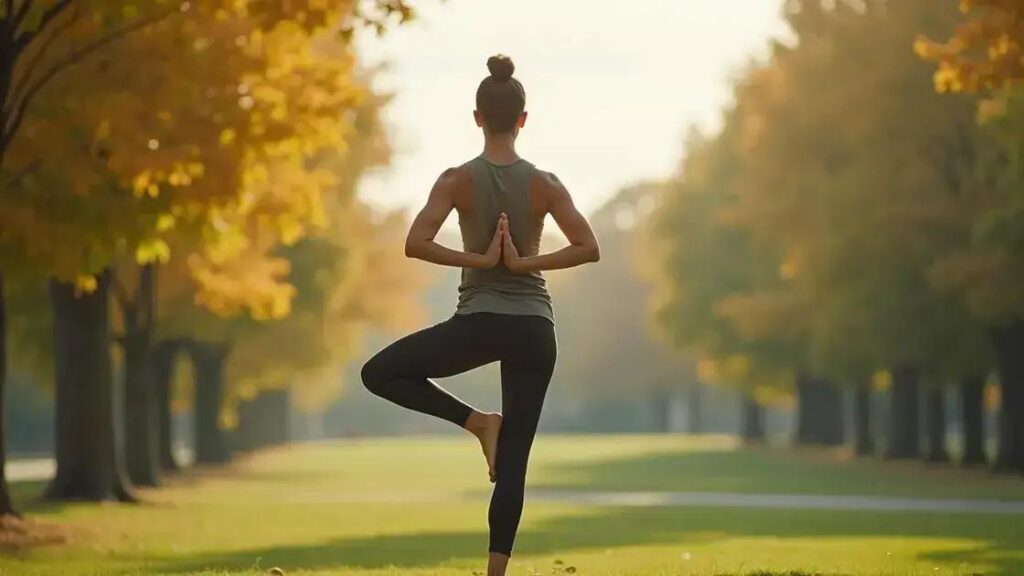To improve mobility with yoga for beginners, focus on incorporating essential poses, establishing a consistent practice routine, and avoiding common mistakes such as improper alignment and overexertion, which will enhance flexibility, strength, and overall well-being.
Yoga offers incredible benefits for those looking to enhance their mobility. For beginners, starting a yoga practice can lead to improved flexibility, better posture, and increased strength. In this guide, we will delve into essential aspects of how to improve mobility with yoga for beginners, focusing on key poses and routines that cater to newcomers. By integrating yoga into your daily life, you can unlock a transformative pathway to a healthier body and mind.
Understanding Mobility and Yoga Benefits
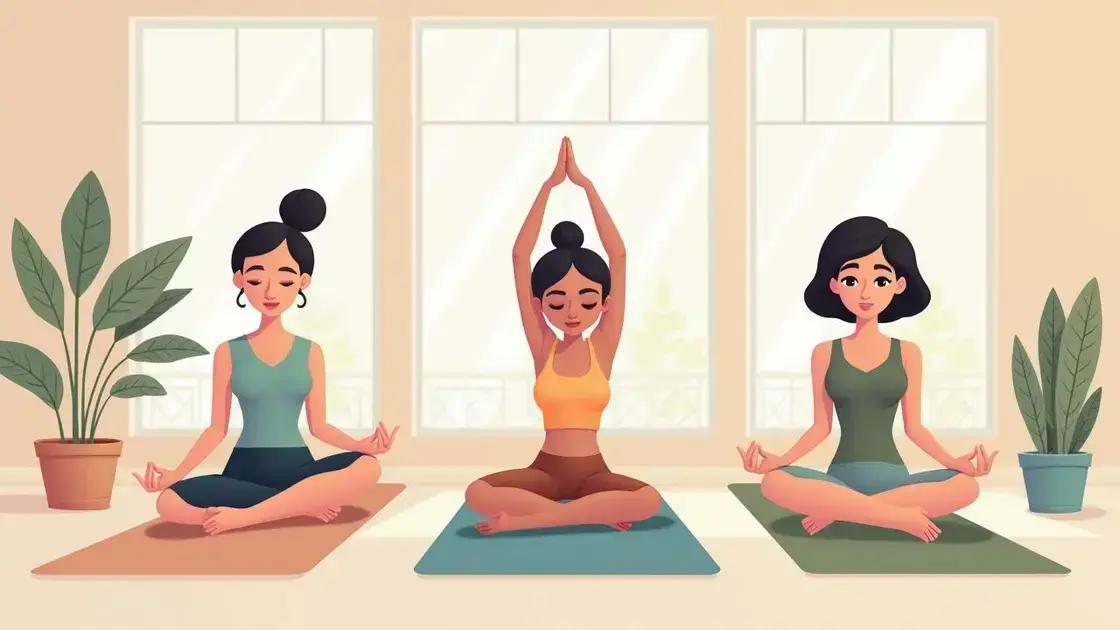
Mobility is essential for a healthy lifestyle. It refers to the ability to move freely and easily. Improving mobility allows for better physical performance in daily activities.
Benefits of Yoga for Mobility
Yoga is a fantastic way to enhance mobility. The practice focuses on stretching, strengthening, and relaxing the body. With regular yoga practice, you will notice:
Improved Flexibility
Many yoga poses stretch muscles and joints. This helps reduce stiffness, making everyday movements easier. Increased flexibility also decreases the risk of injuries.
Enhanced Strength
Yoga builds strength in both primary and supporting muscles. This strength allows for better control over your movements. Strong muscles support your joints, making them more stable.
Better Posture
A key aspect of yoga is body awareness. Practicing yoga encourages good posture and alignment. A proper posture reduces strain on the body and promotes ease of movement.
The Mind-Body Connection
Yoga combines physical movements with mindful breathing. This connection helps reduce stress and tension in your body. Lower stress levels contribute to better mobility and overall health.
Engaging in yoga can significantly improve your mobility. As you practice, focus on listening to your body and understand its limits. With time and dedication, you’ll enjoy the many benefits yoga has to offer for enhanced movement.
Essential Yoga Poses for Beginners
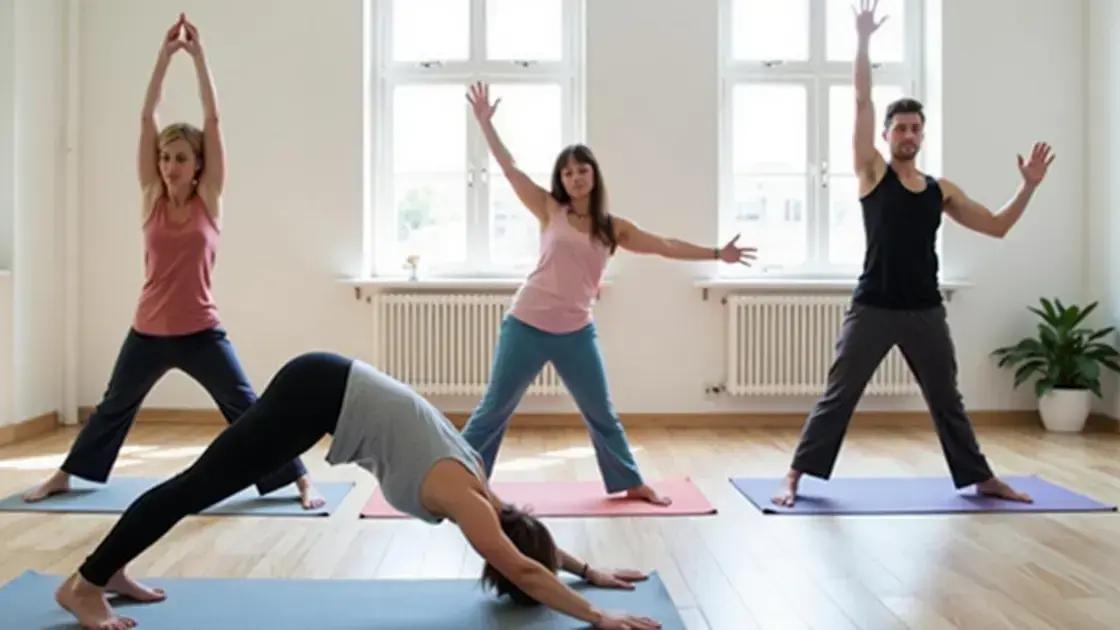
Yoga offers a range of poses that are ideal for beginners. These essential poses help to improve mobility while also providing strength and balance. Here are some key yoga poses to get you started:
1. Mountain Pose (Tadasana)
This foundational pose helps establish good posture and alignment. Stand tall with feet together, arms at your sides. Engage your thighs, lift your chest, and relax your shoulders.
2. Downward Facing Dog (Adho Mukha Svanasana)
Begin on all fours. Tuck your toes and lift your hips towards the ceiling, forming an inverted V-shape. This pose stretches the hamstrings and calves while strengthening the arms and shoulders.
3. Child’s Pose (Balasana)
This is a resting posture that stretches the hips, thighs, and spine. Kneel on the floor, sit back on your heels, and lay your torso between your thighs, stretching your arms in front of you.
4. Warrior II (Virabhadrasana II)
This pose builds strength and stability. Stand with feet wide apart, turn one foot out, and bend that knee. Extend your arms parallel to the ground, gazing over the front hand.
5. Cat-Cow Stretch (Marjaryasana-Bitilasana)
Get on all fours. Inhale, arch your back (Cow), and look up. Exhale, round your back (Cat) and tuck your chin. This stretch improves flexibility and mobility in the spine.
6. Standing Forward Bend (Uttanasana)
From standing, hinge at your hips and fold forward. Keep knees slightly bent if needed. This pose calms the mind while stretching the hamstrings and calves.
Incorporating these essential yoga poses into your routine can help beginners improve mobility and overall body awareness. Practicing these poses regularly will build a strong foundation for your yoga journey.
Creating a Consistent Yoga Routine
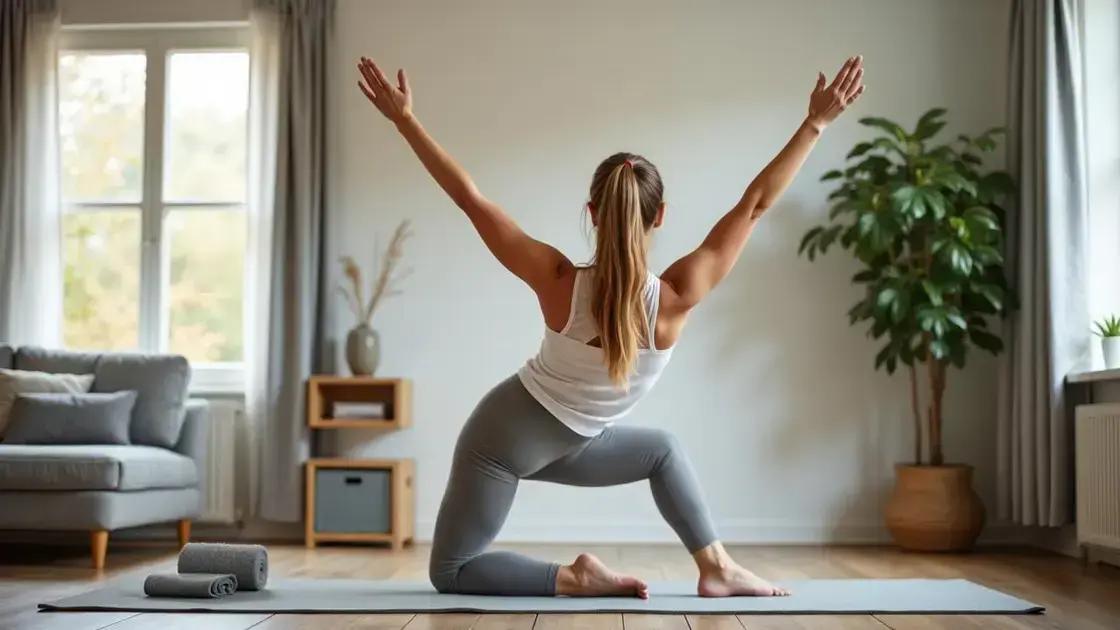
Creating a consistent yoga routine is crucial for improving mobility and overall well-being. Here are some tips to help you establish a steady practice:
Set Realistic Goals
Start by setting achievable goals. Decide how often you want to practice yoga each week. Aiming for two to three sessions per week is a good start for beginners.
Choose a Convenient Time
Pick a specific time of day that works best for you. Some people prefer morning sessions to energize their day, while others may choose evenings to unwind. Consistency is key!
Create a Dedicated Space
Find a quiet, comfortable space where you can practice without distractions. It could be a corner of a room or even outdoors. Having a designated area will help signal to your mind that it’s time for yoga.
Use Online Resources or Classes
If you’re unsure of where to start, consider using online resources or joining local classes. Many platforms offer guided sessions specifically for beginners. Following instructions can enhance your practice and boost your confidence.
Keep a Yoga Journal
Document your progress by keeping a yoga journal. Write down your goals, feelings, and any challenges you face during your practice. This reflection will help you stay motivated and track your improvements.
Listen to Your Body
Always pay attention to how your body feels during practice. If something doesn’t feel right, modify the pose or take a break. Respecting your body is essential for long-term success in your yoga journey.
Consistency is the foundation of any yoga practice. By sticking to a routine, you will gradually notice improvements in your mobility and overall health.
Common Mistakes to Avoid
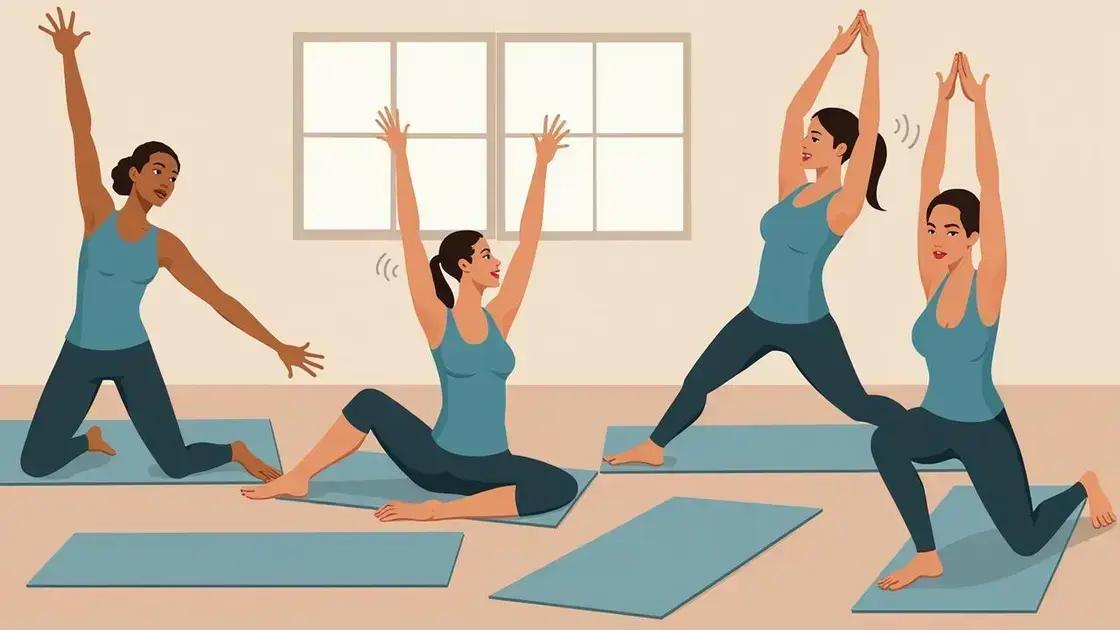
When starting a yoga practice, avoiding common mistakes is vital for progress and safety. Here are key mistakes that beginners often make:
1. Skipping Warm-Up
Jumping straight into intense poses can lead to injuries. Always begin with gentle warm-up stretches to prepare your body.
2. Overexerting Yourself
Many beginners push themselves too hard to achieve perfect poses. Listen to your body and don’t force yourself into a position that feels uncomfortable or painful.
3. Neglecting Proper Alignment
Incorrect alignment can cause strain on your joints and muscles. Focus on maintaining proper form and consider using a mirror or asking an instructor for guidance.
4. Holding Your Breath
Breath is an essential part of yoga. Many beginners forget to breathe deeply, which can hinder their practice. Remember to inhale and exhale fully during each pose.
5. Comparing Yourself to Others
It’s natural to look at others, but comparing yourself can lead to frustration. Everyone’s body is different, and progress takes time. Focus on your journey instead.
6. Ignoring Rest Days
Rest is crucial for recovery. Some beginners feel they must practice daily, but taking breaks helps prevent burnout and injury.
7. Not Staying Hydrated
Dehydration can affect your performance. Make sure to drink water before and after your practice to stay hydrated and alert.
By avoiding these common mistakes, you can create a safe and effective yoga practice that enhances your mobility and overall well-being.
Start Your Journey to Improved Mobility with Yoga
Improving mobility with yoga is a rewarding journey for beginners. By understanding the benefits of yoga, practicing essential poses, and establishing a consistent routine, you can enhance your physical capabilities and overall well-being.
Avoiding common mistakes along the way ensures a safe and effective practice. Remember, progress takes time, so be patient with yourself and listen to your body.
Embrace the transformative power of yoga to boost your mobility and cultivate a healthier lifestyle. Your journey to a more flexible and resilient body begins now.
FAQ – Frequently Asked Questions about Yoga for Beginners
What are the benefits of yoga for beginners?
Yoga improves flexibility, strength, and balance, while also promoting relaxation and reducing stress.
How often should beginners practice yoga?
Beginners should aim for two to three sessions per week to establish a consistent routine and see progress.
What essential poses should I start with?
Begin with poses like Mountain, Downward Facing Dog, Child’s Pose, Warrior II, and Cat-Cow Stretch to improve mobility.
How can I create a consistent yoga routine?
Set realistic goals, choose a convenient time, create a dedicated space, and use online resources or classes for guidance.
What common mistakes should beginners avoid?
Beginners should avoid skipping warm-ups, overexerting themselves, neglecting alignment, and not staying hydrated.
Can yoga help with mobility issues?
Yes, yoga is an effective practice for improving mobility through stretching, strengthening, and enhancing body awareness.

